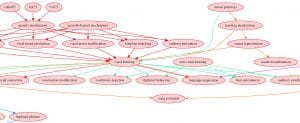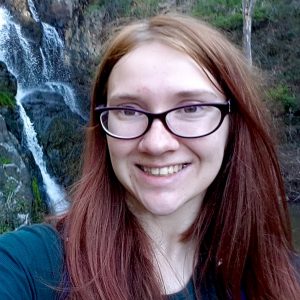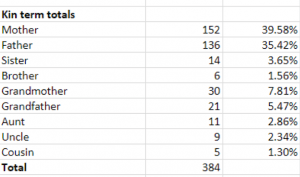This summer I worked with Dr Alice Mitchell researching how person reference terms are used in child-directed speech in English. To do this we made use of the CHILDES database (example pictured below), a collection of transcriptions of children’s speech. Instances of person reference were recorded and coded into five categories, kin terms, kin terms + name, name, noun phrase or pronoun.

We were particularly interested to see how adults used kinship terms, and whether they used their own perspective on the kinship relation or the child’s. Kin terms represented around a quarter of all person references in child-directed speech. Of these, the vast majority were anchored to the child’s perspective. Adults only rarely anchored kinship terms to their own perspective, and a small proportion of terms were anchored to a third person’s perspective, e.g. “Stefan’s Mummy”. This was most noticeable in the usage of kinterms as self-references. Adults would frequently refer to themselves by the kin term the child calls them, e.g. “Mummy’s going to the toilet, darling”. About half of all child-anchored kin terms were self-references, making this specific kin term usage one of the most frequent types.
There were also variations in the kin terms themselves. For example, the kin term “Mother” had several variations depending on country and the age of the child. “Mummy” was the most frequent term used by UK English speakers whereas American English speakers used “Mommy” the most. In kinterms relating to fathers, use of “Dada” was more likely to be found in corpora with younger children, whereas “Daddy” was used across a range of ages.
Whilst siblings, aunts, uncles and cousins were likely to come up in conversation, these relations tended to be referred to by name rather than by kin term. Names were the most frequent type of person reference. A surprising finding from this research was the amount of times fictional characters, either from TV shows or books were discussed. Out of the 492 instances of name references in the database, “Miffy” a cartoon rabbit was mentioned 42 times! Other popular characters included Winnie the Pooh and Dora the explorer. It is unclear whether fictional characters are this frequent in naturalistic child-directed speech, or whether this is a bias of the way the information was collected as many of the recordings were of play sessions, where toys of those characters triggered discussion.
After finishing data collection I had the chance in my final week of my internship to contribute to the CHIELD project (pictured below). The first two papers I coded were concerned with language acquisition in children. I found it really interesting to learn about what evolutionary mechanisms underpinned the patterns of child-directed speech I had noticed in the database, as well as learn about cultural differences in how adults spoke to their children. Outside of university, music is my main hobby, so having the chance to read about its evolution and its connection to human language was really eye opening. Learning what evolutionary mechanisms are needed to support each part of singing behaviour (i.e. rhythmic and melodic phrasing) and how they could be found in non-human animals was particularly interesting for me.


My four weeks as a summer intern at excd were really enjoyable. I learnt so much in a short period of time. Getting to grips with the practical side of anthropology, through data collection, coding and analysis will be an incredibly useful foundation for next year of my degree. Seeing the range of research being done in the lab has given me plenty of ideas for dissertation topics!
